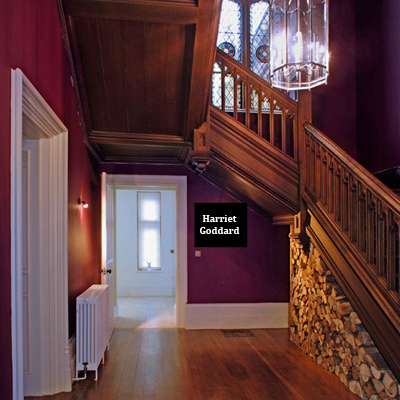
With floor space in short supply in many museums, the advantage of a Virtual Museum is that you can put your office anywhere and there is no limit on space.
My office is a small room under the stairs which leads up to the floor above the Museum.
As you know, poor Harry Potter was forced to live under the stairs at his home in Privet Drive, Little Whinging, Surrey, but he was put there as a punishment.
Fortunately, I have a well-equipped, comfortable, understairs office with my name by the door, as you can see from the photograph (right). Actually, that's not really what my office looks like but, hey, we can all dream, can't we ... ?